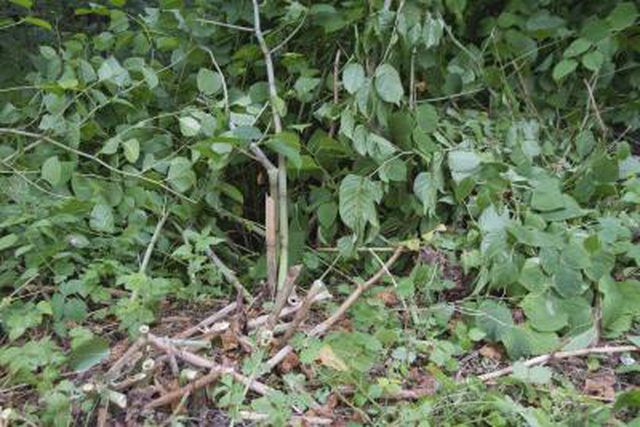Bulbs
Flower Basics
Flower Beds & Specialty Gardens
Flower Garden
Garden Furniture
Garden Gnomes
Garden Seeds
Garden Sheds
Garden Statues
Garden Tools & Supplies
Gardening Basics
Green & Organic
Groundcovers & Vines
Growing Annuals
Growing Basil
Growing Beans
Growing Berries
Growing Blueberries
Growing Cactus
Growing Corn
Growing Cotton
Growing Edibles
Growing Flowers
Growing Garlic
Growing Grapes
Growing Grass
Growing Herbs
Growing Jasmine
Growing Mint
Growing Mushrooms
Orchids
Growing Peanuts
Growing Perennials
Growing Plants
Growing Rosemary
Growing Roses
Growing Strawberries
Growing Sunflowers
Growing Thyme
Growing Tomatoes
Growing Tulips
Growing Vegetables
Herb Basics
Herb Garden
Indoor Growing
Landscaping Basics
Landscaping Patios
Landscaping Plants
Landscaping Shrubs
Landscaping Trees
Landscaping Walks & Pathways
Lawn Basics
Lawn Maintenance
Lawn Mowers
Lawn Ornaments
Lawn Planting
Lawn Tools
Outdoor Growing
Overall Landscape Planning
Pests, Weeds & Problems
Plant Basics
Rock Garden
Rose Garden
Shrubs
Soil
Specialty Gardens
Trees
Vegetable Garden
Yard Maintenance
How to Get Rid of Japanese Knotweed
How to Get Rid of Japanese Knotweed. Japanese knotweed (Polygonum cuspidatum), sometimes called Mexican bamboo, is a shrubby perennial that thrives in U.S. Department of Agriculture plant hardiness zones 6 through 9. Originally introduced from East Asia as a garden ornamental, its vigorous rhizomes have allowed it to escape cultivation and form...

Japanese knotweed (Polygonum cuspidatum), sometimes called Mexican bamboo, is a shrubby perennial that thrives in U.S. Department of Agriculture plant hardiness zones 6 through 9. Originally introduced from East Asia as a garden ornamental, its vigorous rhizomes have allowed it to escape cultivation and form dense mats that crowd out native plants. Knotweed grows in 36 states where it is typically considered a noxious weed. Although difficult to eradicate once established, you can still successfully suppress knotweed plants through mechanical and chemical means.
Digging Up Knotweed
Grubbing effectively works for small knotweed plants or patches. When the soil is moist, use a garden spade or shovel to remove the whole plant, including the entire root system and all of the runners. Even a small, 1-inch piece of plant can resprout and start a new knotweed colony if you leave it in the soil. Bag up all of the removed plant parts and toss them into a covered trash can so the pieces can't regrow. Check the treated area twice a month to remove any resprouts.
Mowing and Cutting
Mowing the weeds once a week on the mower deck's lowest possible setting can sometimes reduce the plants' rhizomatous reserves enough to kill the entire knotweed plant. Mow the infested area throughout the entire growing season until the first winter frost kills the plant. Regularly cutting knotweed stems off near the soil line can also kill the entire plant by depleting its underground reserves. The Montana State University Extension recommends you cut the stems to the ground at least three times annually, making the last cutting in late autumn before the knotweed loses its leaves for the winter.
Cut Stem Application
The cut stem application method is effective on established knotweed colonies or those growing near desirable plants. Glyphosate-based herbicides work well on knotweed and can be easily applied using a spray bottle. Carefully read and follow the label's instructions. Most products recommend either using the concentrate undiluted or making a 50 percent solution of concentrate and water. Cut the knotweed stems 2 to 3 inches above ground level and immediately spray the glyphosate on the cut stem. Wait at least one week before mowing or cutting the treated stems so the chemicals have time to work down to the rhizomes. Hand pull, cut or spray any new sprouts that emerge. For optimal results, treat the weeds on a late summer or early autumn day when precipitation isn't expected for at least 60 minutes after treatment.
Foliar Spray
Large knotweed populations often require a foliar application of a glyphosate herbicide to effectively eradicate the plants. Following the manufacturer's directions, mix together a 2 percent glyphosate solution, or about 2 1/2 fluid ounces for every gallon of water. Use a handheld garden sprayer to completely wet down all the foliage, but don't spray the leaves to the point of runoff. Repeat application annually until the entire colony dies. Foliar sprays work most effectively in the autumn when the weed is sending nutrients down to the roots for winter storage. Spray only when temperatures are above 65 degrees Fahrenheit.
A Few Warnings
Glyphosate is a systemic herbicide that will kill any vegetation it touches. Take care not to get the chemicals on any desirable plants or grass when mixing and spraying. Although glyphosate isn't supposed to be toxic to people or pets, keep them out of the treatment area until the herbicide completely dries. Glyphosate can cause skin or eye irritation, so protect yourself from exposure by wearing rubber gloves, protective eyewear, shoes with socks, long sleeves and long pants.